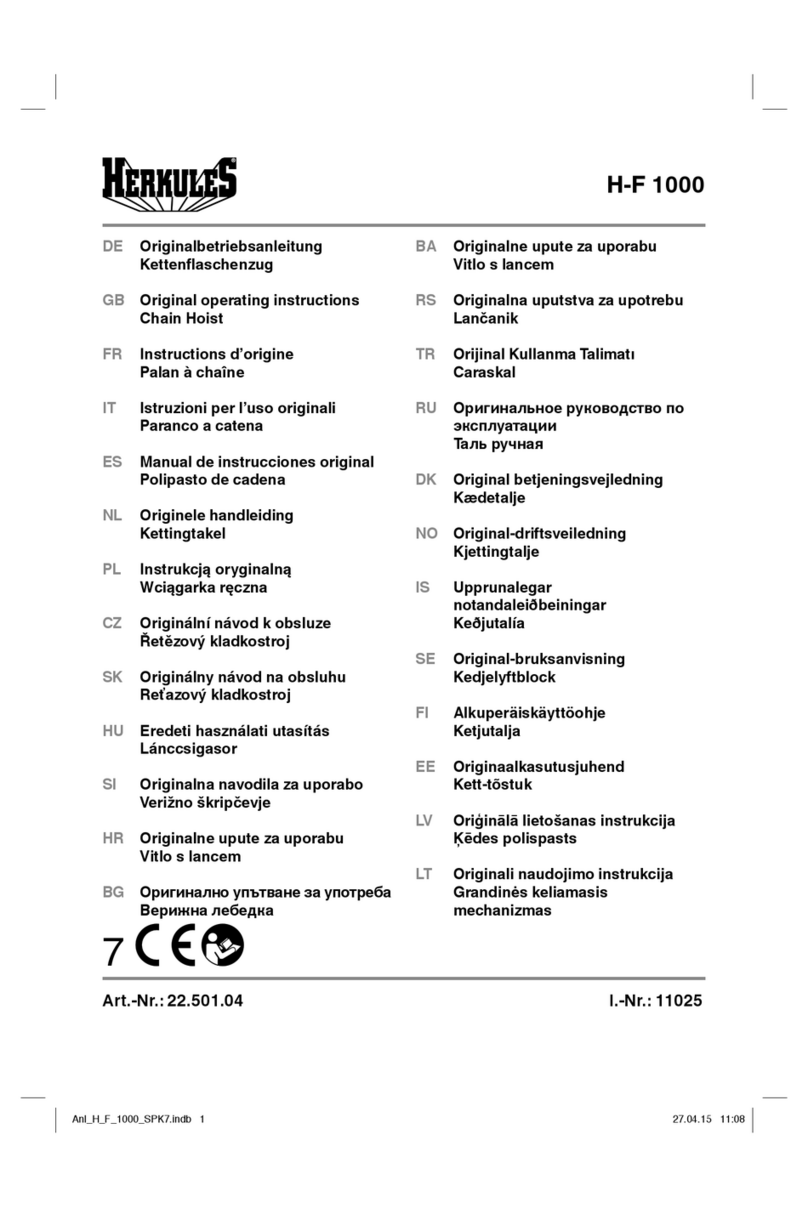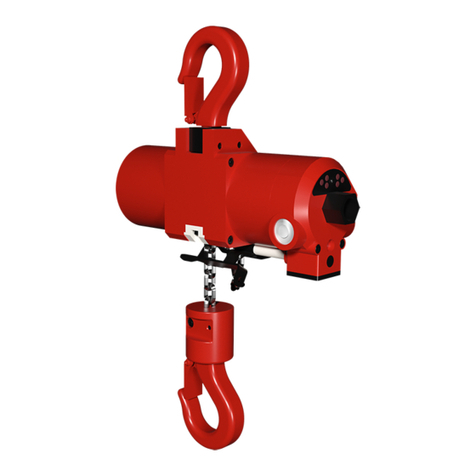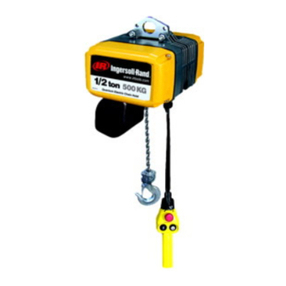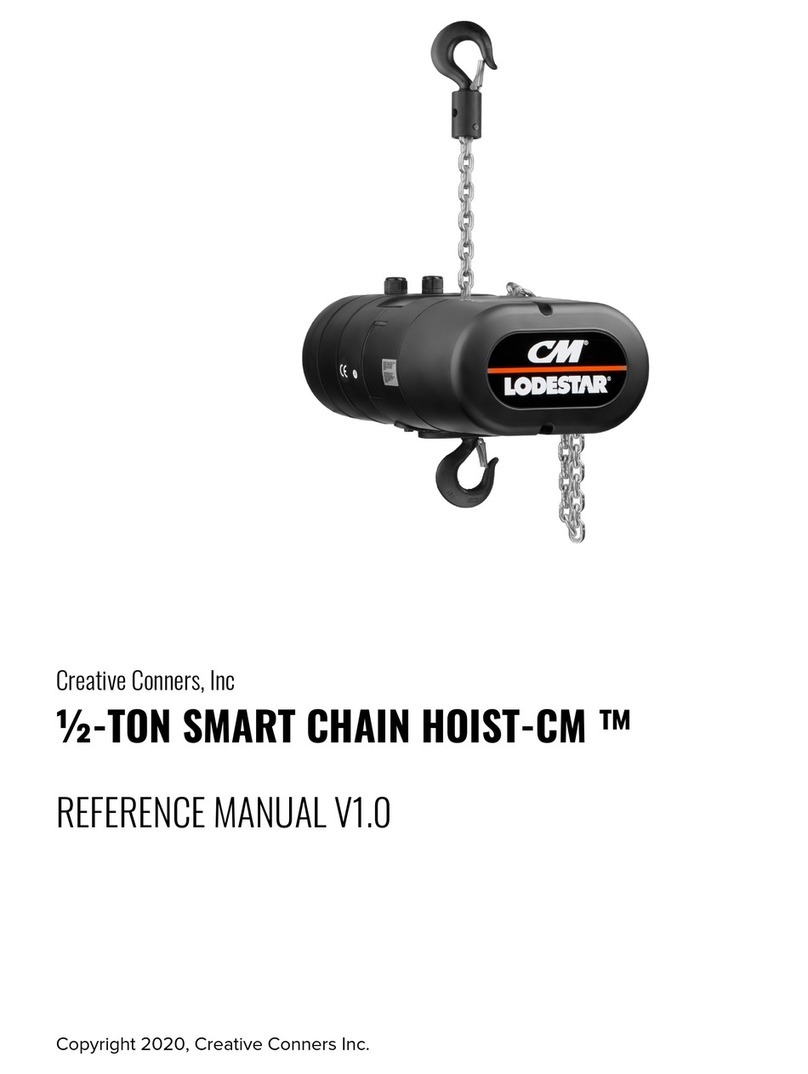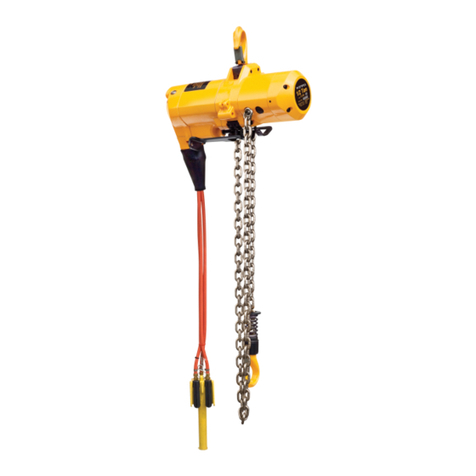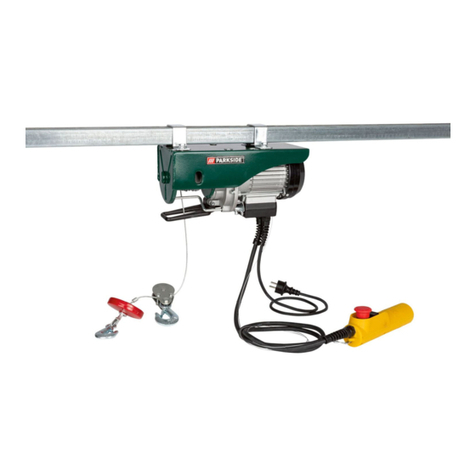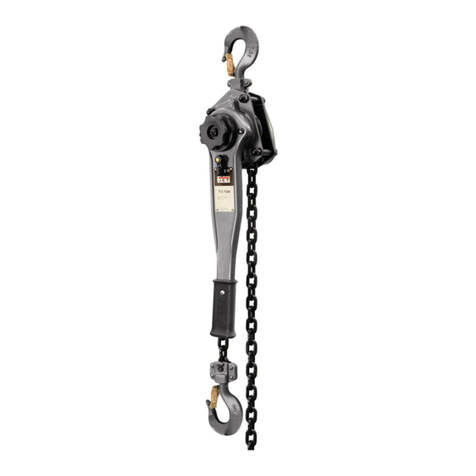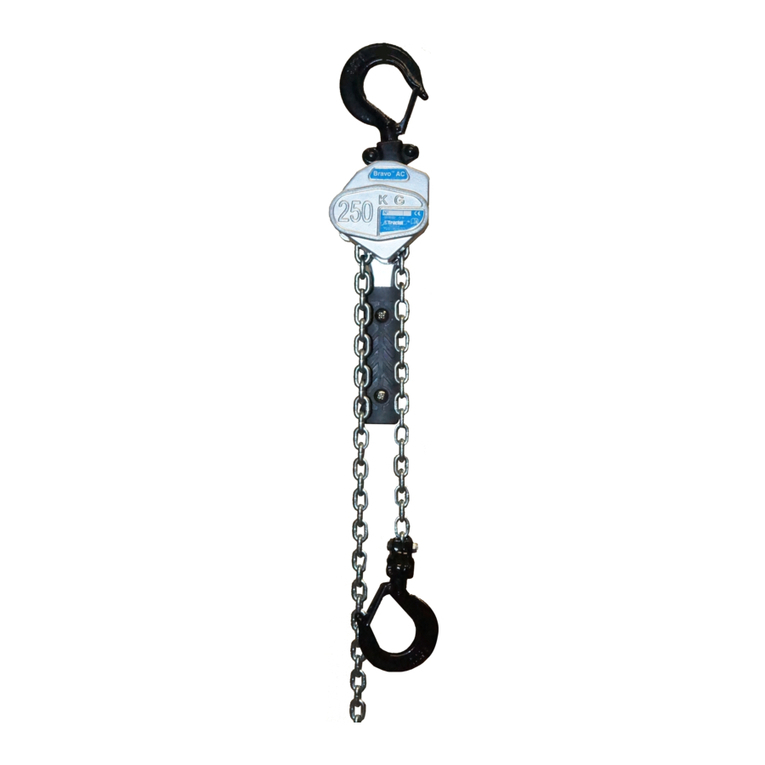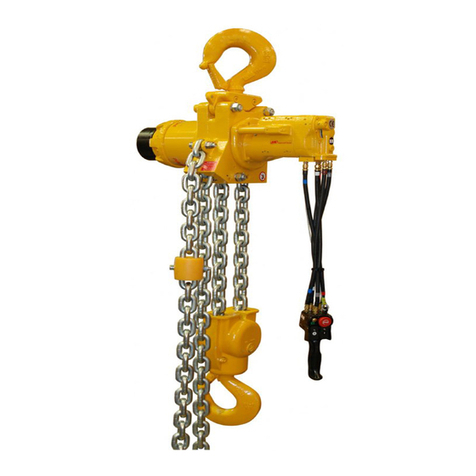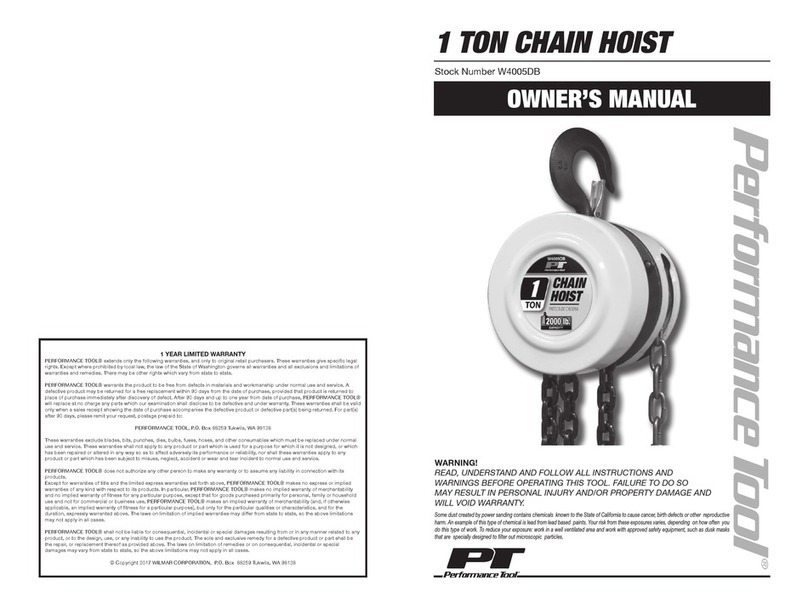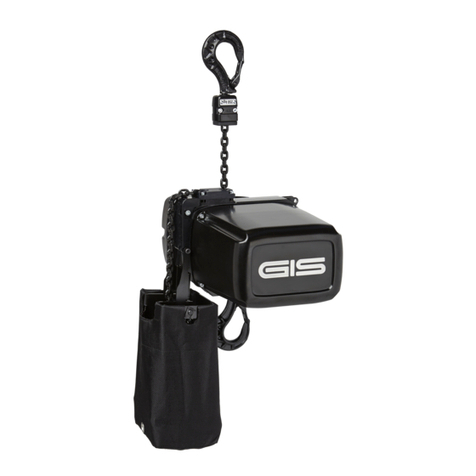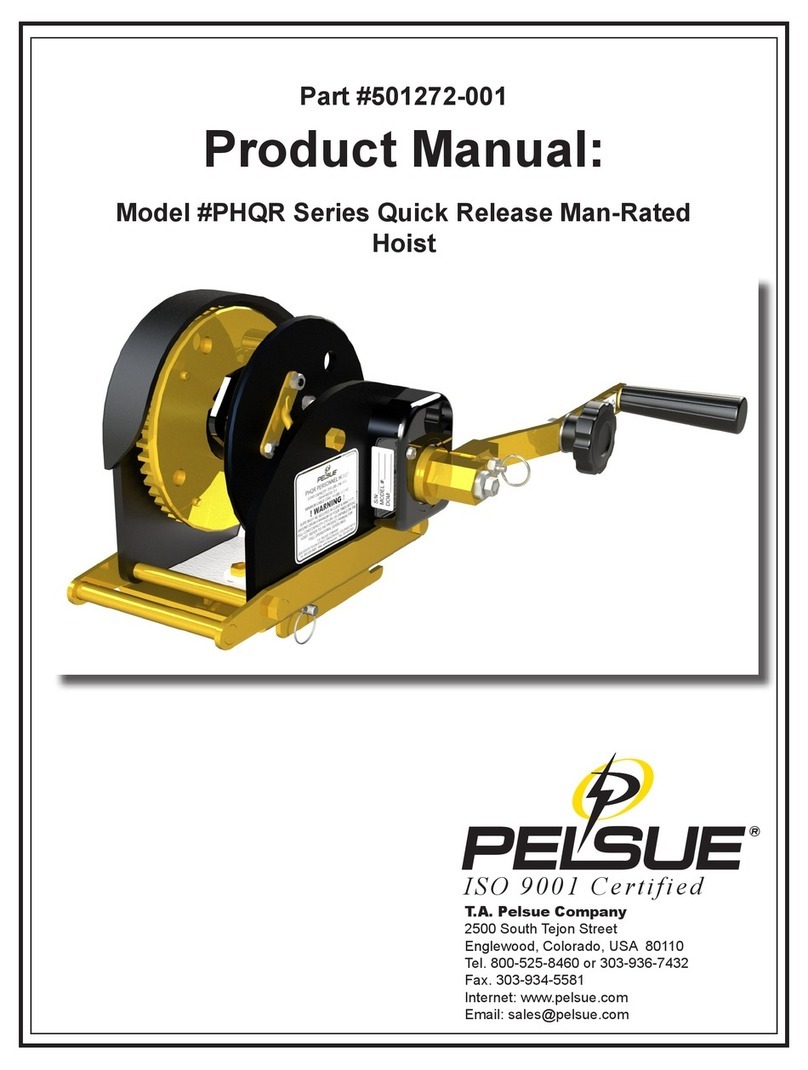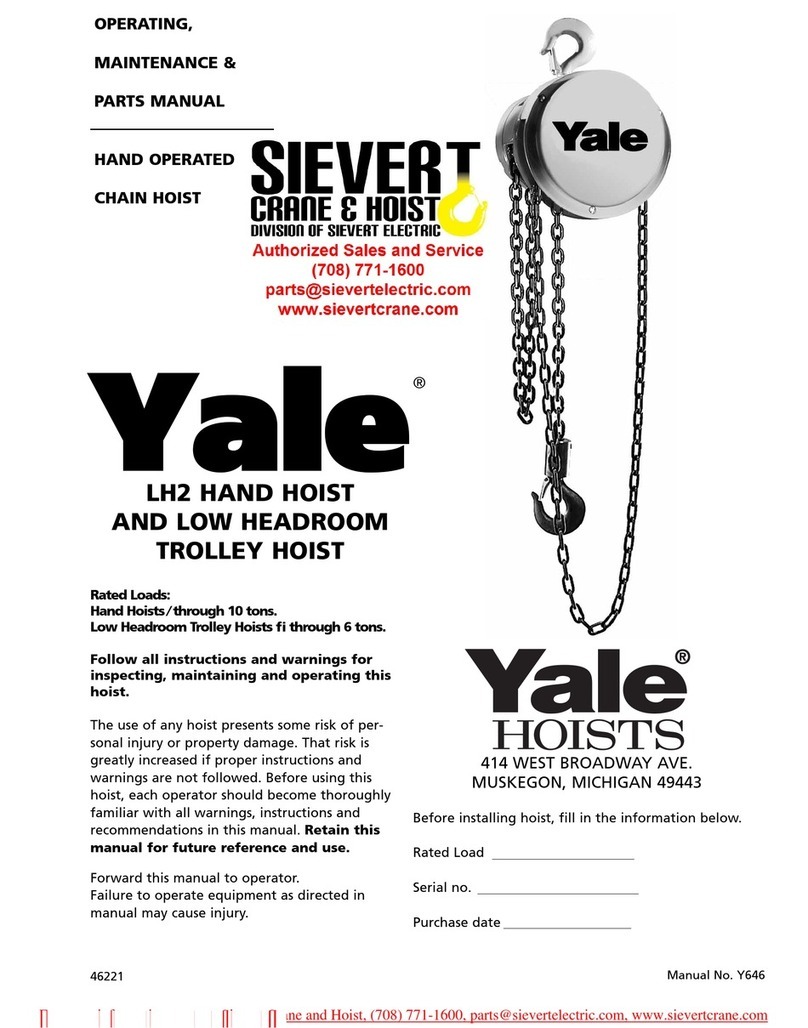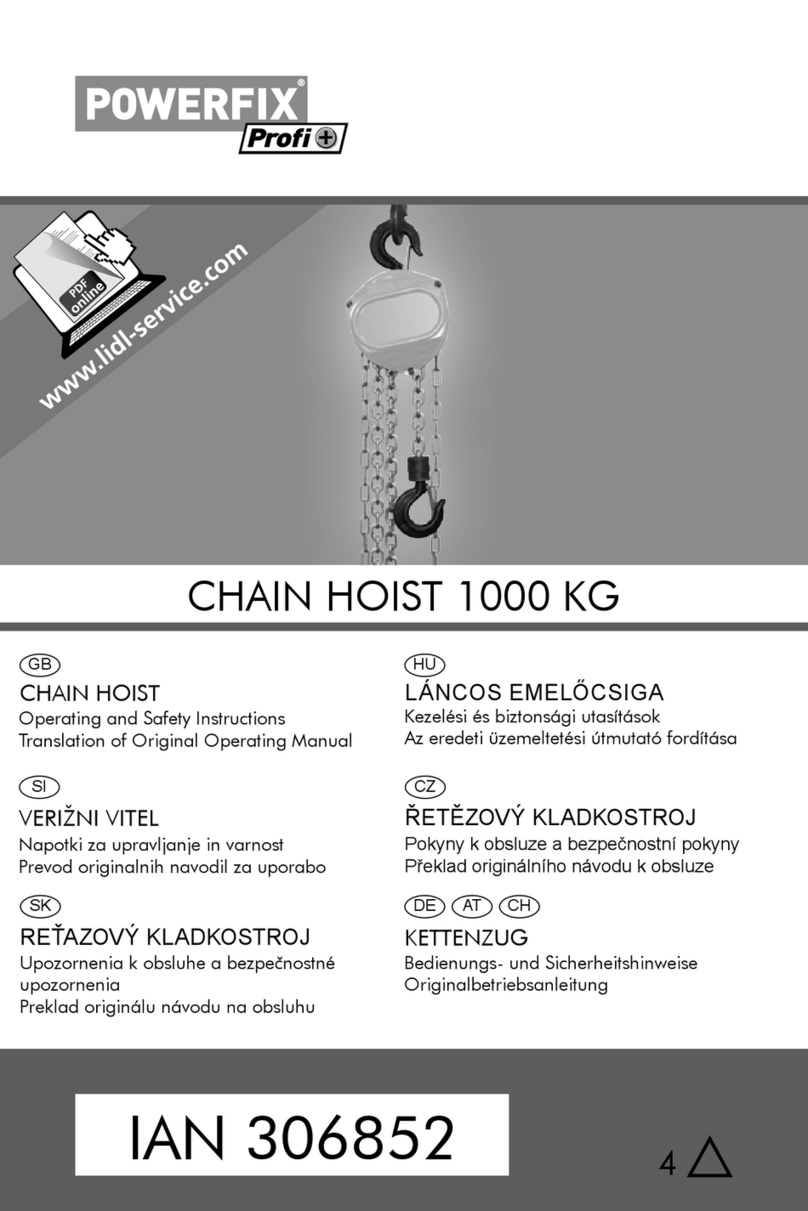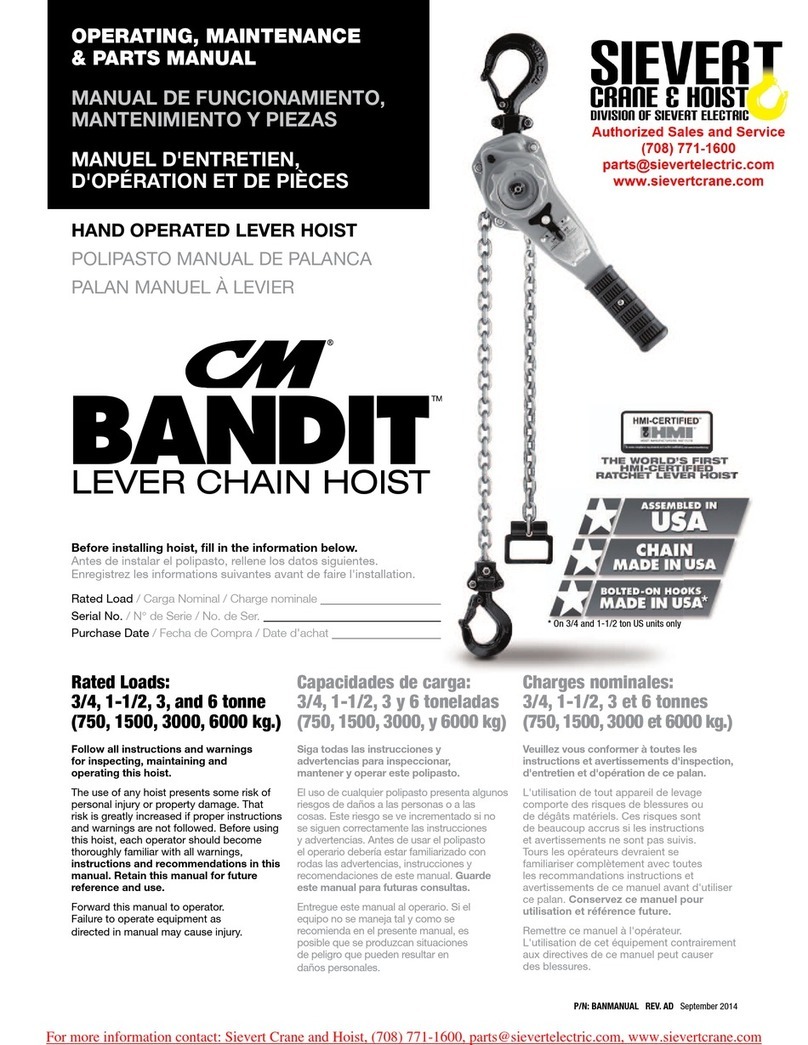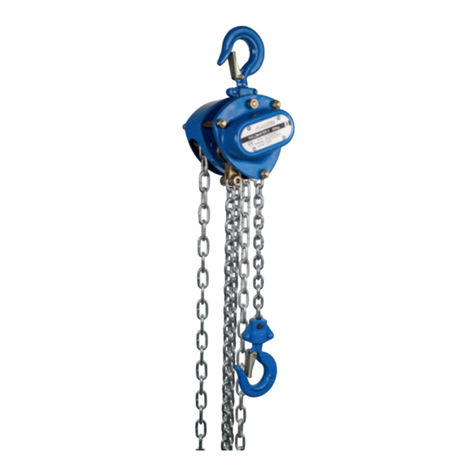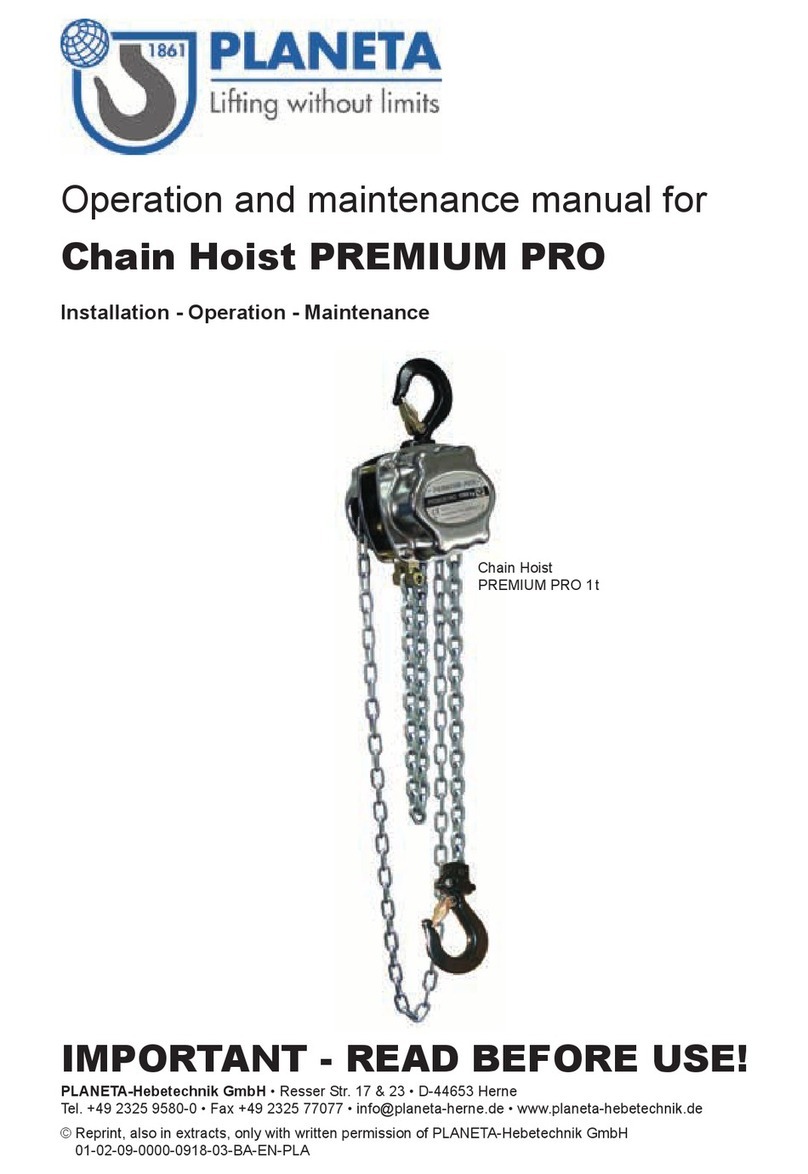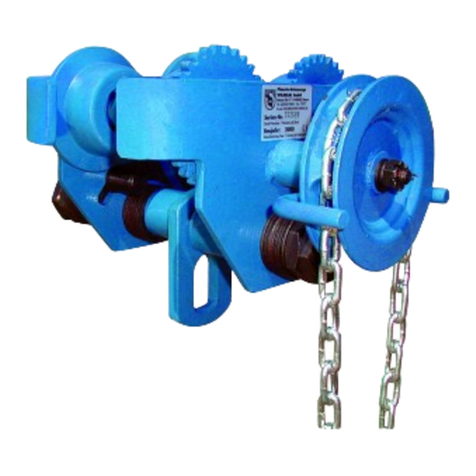
CONTENTS
1. Safety
lnstructions
......................................................................................1
2.
Specification
s …………………………………………………………………………………………
5
3. Checks and lnstructionsbefore Installation
......................................................................
5
3.1 Checks of the Product ........................................................................................................................................ 5
3.2 lnstructions on Warking
Condition
s…
.......................................................................
5
4. Installation …………………………………………………………………………….. 6
4.1 Installation
....................................................................................................... 6
4.2 Before AirConnection ………………………………………………………………… 6
5. Checksafter Installationand Test Run
...........................................................................
7
Check of Hoisting
Operation................................................................................. 7
Check of the PreventiveDevice against Reverse Winding (Overlowering Limit Switch) ...
7
Check of the LiftingHeight
................................................................................ 8
Load Test ·····································································································8
6. Checks before Operation - At the beginning of each shift …………………………………………….9
6. 1 Check before Start up ………………………………………………………………………..
9
6. 2 Check by ldling Operation .................................................................................................
9
6. 3 Check by Load Operation …………………………………………………………………………… . 9
7. Periodic
lnspections
…………………………………………………………………………………………….
10
8. Maintenance and lnspection …………………………………………………………………… 11
8. 1 Lubrication……………………………………………………………………………………………….11
8. 2 lnspection ……………………………………………………………………………………………………….
12
8. 3 Storing the Hoist ………………………………………………………………………..16
8. 4
Troubleshooting
…………………………………………………………………………….. 17
9. Brake
Adjustment…………………………………………………………………………………….
18
10. Disassembly and Reassembly ………………………………………………………………………….18
10. 1
Proceduresof Disassembly ………………………………………………………………….
19
10. 2 Reassembly ……………………………………………………………………..
20
11. Parts List ……………………………………………………………………………… 26
•
Disassembly Drawing of EHW-60 and EHW-120 ······················································ 28
•
Disassembly Drawing of EHW-60R and EHW-120R
...................................................
30

